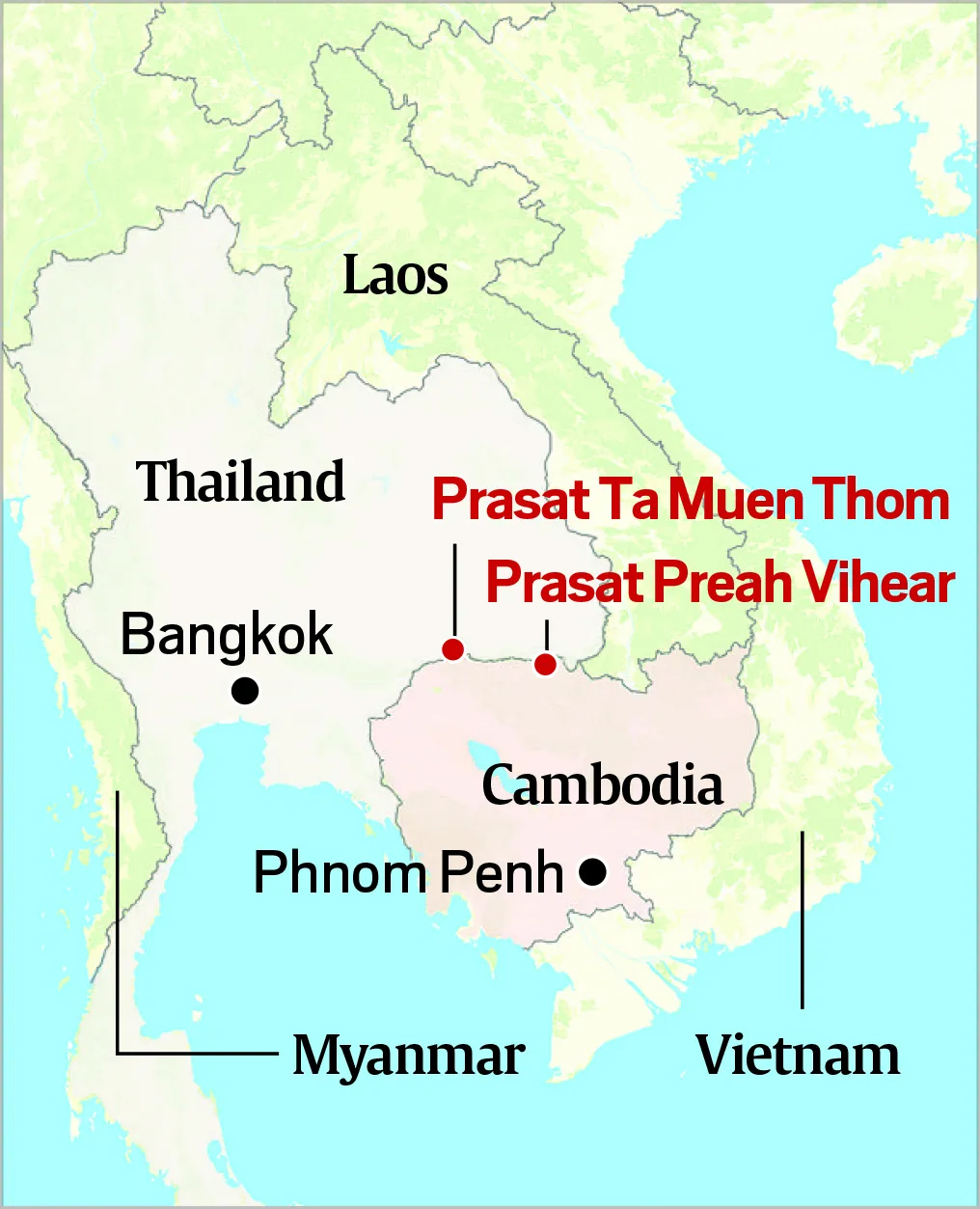Context:
On July 24, violent clashes erupted along the Thailand-Cambodia border, marking the most serious escalation in over a decade. At least 12 people have been killed, dozens wounded, and more than 40,000 civilians displaced in what appears to be a spiralling territorial dispute over ancient Hindu temples.
About Centre of the Dispute:
At the core of the standoff are two ancient Hindu temple complexes: Preah Vihear and Ta Muen Thom. Both are architectural relics of the Khmer Empire, a once-mighty Southeast Asian kingdom that flourished from the 9th to 15th centuries and left a sprawling legacy of temples, most famously Angkor Wat.
- Preah Vihear, a 900-year-old temple dedicated to Lord Shiva, sits atop a 525-metre cliff in Cambodia's Dangrek Mountains, directly on the Cambodia-Thailand border.
- Ta Muen Thom, another 12th-century Shiva shrine, lies about 95 km west, in Thailand’s Surin Province, part of a cluster of temples built on a traditional trade and pilgrimage route.

History of the dispute:
The roots of this conflict lie in colonial cartography. Between 1904 and 1907, French surveyors—acting under the colonial protectorate of French Indochina—drew border maps between French-controlled Cambodia and Thailand (then Siam).
· A 1907 French map placed the Preah Vihear temple within Cambodia, even though it was geographically closer to Thailand.
· The map was accepted at the time by Siamese authorities, who believed it followed the natural watershed line. But decades later, Thailand contested the map’s validity, claiming it was misled.
· In 1962, the International Court of Justice (ICJ) ruled in Cambodia’s favour, citing Thailand’s earlier acceptance of the map. The ruling mandated Thai withdrawal and return of temple artefacts.
· However, ambiguities remained over the surrounding land, which became the next flashpoint.
· In 2013, after renewed fighting in 2011, the ICJ clarified its ruling, confirming that Cambodia holds sovereignty over both the temple and its immediate vicinity, and instructed Thailand to withdraw all forces.
Implications:
The conflict between Thailand and Cambodia highlights the complexities of colonial-era borders and the challenges of resolving territorial disputes.
· Southeast Asian historians have long noted that boundaries, particularly those drawn by Western powers, were alien to regional politics.
· The French-made maps based on European cartography gave Cambodia a distinct "geo-body," with Preah Vihear located just inside its borders.
Conclusion:
The conflict between Thailand and Cambodia over the Hindu temples is a complex issue that requires a nuanced understanding of the historical and cultural context. The dispute has been on-going for over half a century, and a lasting resolution will require diplomatic efforts and a willingness to compromise. The international community must play a role in promoting peace and stability in the region, and encouraging both countries to find a peaceful solution to the conflict.






